What does the camera reveal about the key characters in “Game of Thrones” Battle of the Bastards?
Quick Answer: Game of Thrones’ The Battle of the Bastards sets up a showdown between the up-close and emotionally charged Jon Snow and the brutal, distant violence of Ramsay Bolton. The fight cinematography both takes viewers into the close-up heart of combat and carries them high above the action, allowing us to see the battle in the opposing manners of its two primary participants, Jon the passionate soldier and Ramsay the cold-blooded general. Meanwhile, the Starks’ true general has been waiting in the distance: the plotting, vengeful Sansa. The fight strategies of all three players are reflected in the striking camera choices. Meanwhile, the battle for Meereen at the start of the episode also brings Daenerys’ fighting style in contrast with the others. Watch more on how the battle was filmed with the HBO video at the end of the article.
(Want to get more Game of Thrones insights by email? Here’s the sign-up.)
Game of Thrones (2011-) favorite Jon Snow (Kit Harington) is a renowned fighter and a heroic combatant who boasts an impressive resume of accomplishments. But if the Battle of the Bastards proves anything, it’s that the legendary words of Jon’s lover Ygritte (Rose Leslie), “You know nothing, Jon Snow,” are true.
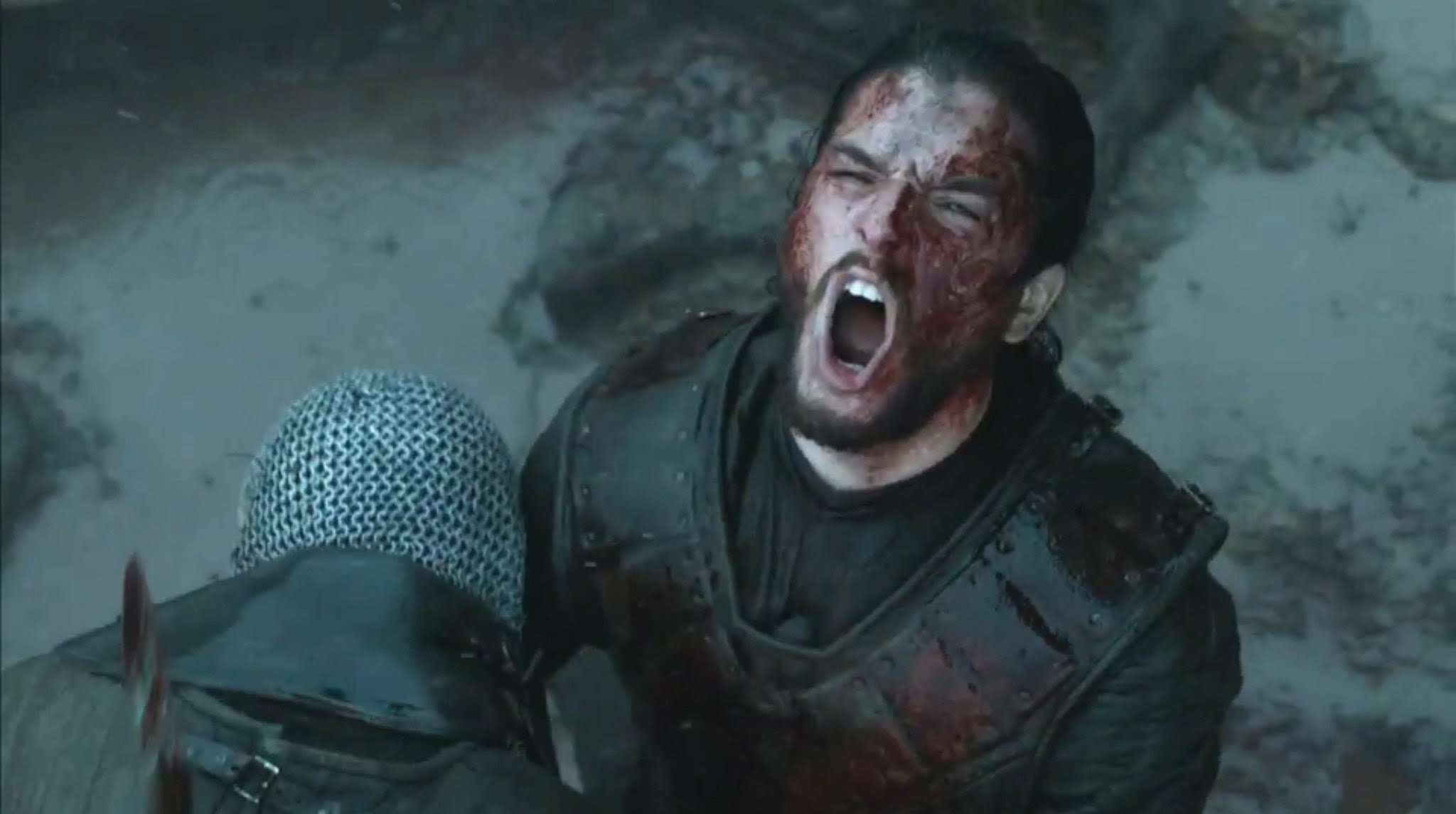
Kit Harington as Jon Snow
In classic Stark form, Jon Snow suggests skipping the battle and challenges Ramsay Bolton (Iwan Rheon) to a one-on-one fight, so that honor can be retained for both parties. Ramsay, not particularly concerned with honor, scoffs. He’s too intelligent to engage in a dirt brawl with one of Westeros’ best living fighters when he can stand behind a large army with the odds safely in his favor. After Jon drafts an elaborate battle plan, his as-yet ignored sister, Sansa (Sophie Turner), suggests Jon consider her input. She has an intimate grasp of the ruthless sadism within Ramsay Bolton (Iwan Rheon), who is, after all, her abusive husband. She warns that Ramsay has the gifts of cold-blooded intelligence and cruel manipulation in spades. “Don’t do what he wants you to do,” she urges, knowing Jon will.
It takes a hot ten seconds for Jon to prove her right and fall prey to Ramsay’s trap of dangling little Rickon (Art Parkinson) out like a piece of meat. When Jon jumps head-first into Ramsay’s sea of arrows, we are reminded how well honor typically serves its heroes on Game of Thrones. Jon Snow’s army follows his suicidal lead and is cut down in multitudes before the Bolton army takes a step. The scrum of carnage, as Jon’s men fight for their lives standing on the bodies of their fellow soldiers, is precisely what Ramsay envisioned.
The action neatly mirrors the two men’s characters. Where Ramsay fights from a tactical distance (reflected by his prowess as an archer) and uses psychological manipulation as his weapon of choice, Jon is all heart, plowing into the face of conflict blade-first and rationale-second. That approach makes Jon a good hero but not a good leader, as Tormund (Kristofer Hivju) and Davos (Liam Cunningham) note prior to the fight. Jon is pure Stark, full of heart and spirit (and likely to die young), a soldier but not a general. As Littlefinger (Aiden Gillen) puts it back in Season 1, Episode 3, “Starks… Quick tempers, slow minds.”
The cinematography of the resulting fight is both epic and intimate to represent the opposing natures of two bastard leaders. Jon is right in the thick of battle, and the camera is right there with him. The focus on Jon makes us feel what he’s feeling. With a intensity beyond anything we’ve experienced before on the show, his panicked, bloody struggle transports us into the reality of a medieval battle. We viscerally experience the view of a soldier and grasp how much survival in battle is the product of luck. The scenes are filmed with constant quick cuts and disorienting sounds to show us the confusing, every-second-could-be-deadly experience of being on the ground during a medieval melee.
When the battle appears lost, Jon is pressed to the ground and trampled by his own men, struggling to “swim” free of the tide of bodies that nearly smother him. The sound is muffled, and we’re treated to bated breath and staccato light-and-dark shots punctuating through Jon’s close-up torment. Jon appears crushed under his own poor strategy or, worse, his own honor.
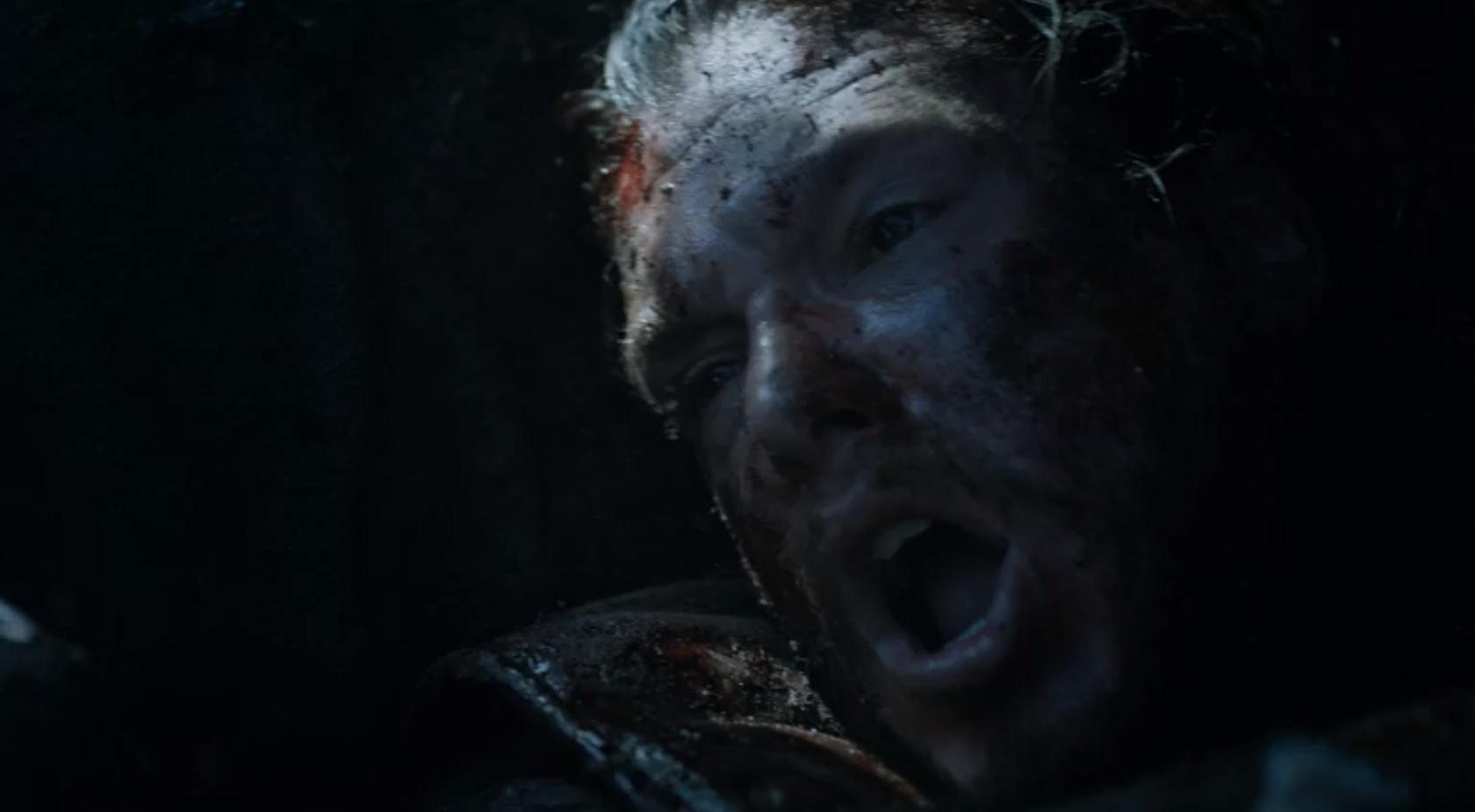
Jon lies on the ground as light and dark images of silouhettes flash before his eyes
Throughout Game of Thrones, the Starks are in the middle of the brutal action, surrounded by endless fighting, despite being geographically separated from one another. Here, Jon is the epitome of that Stark fate. He is the first to charge the battlefield. He does so out of passion, against all reason. He uses his sword, his shield and eventually his fists to emerge victorious against all logical odds. As audience members, we’re expected to root for the Starks as the “good guys” because Jon’s nature shows deep humanity, feeling and bravery. Jon the Soldier stands in profound contrast to Ramsay the General, a figure lacking the slightest glimmer of humanity — yet who shows a far more intelligent approach to the battle.
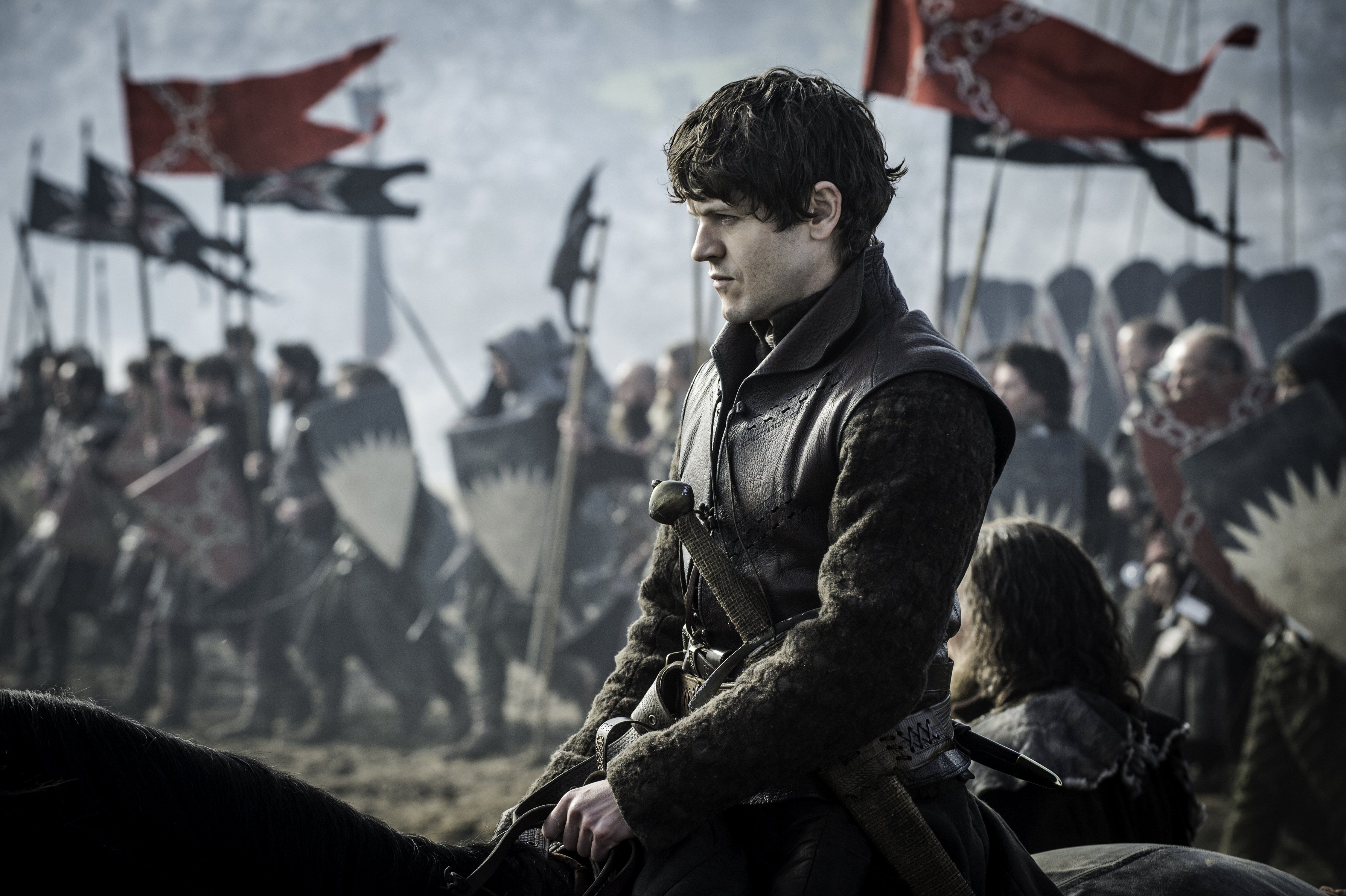
Ramsay watches the battle
Ramsay stays back and lets others fight in his name. The camera shows him calmly watching the fight from a distance or pulls back even more to give us a sense of geography, revealing how totally Ramsay’s forces are enacting a careful plan to trap and obliterate Jon’s forces. The detached, grand-scale camerawork is perfectly suited to an emotionless man who hits unarmed targets with arrows from 200 yards away. While we audience members may be encouraged to loath Ramsay for his cowardly refusal to risk his life, his cool, distant command from an informed perspective mirrors the strategies of successful generals throughout the ages. In Ramsay’s case, it also reflects his nature as an inhuman beast whose family identifies with the sigil of a flayed man and who ultimately flees the battleground when the odds turn against him.
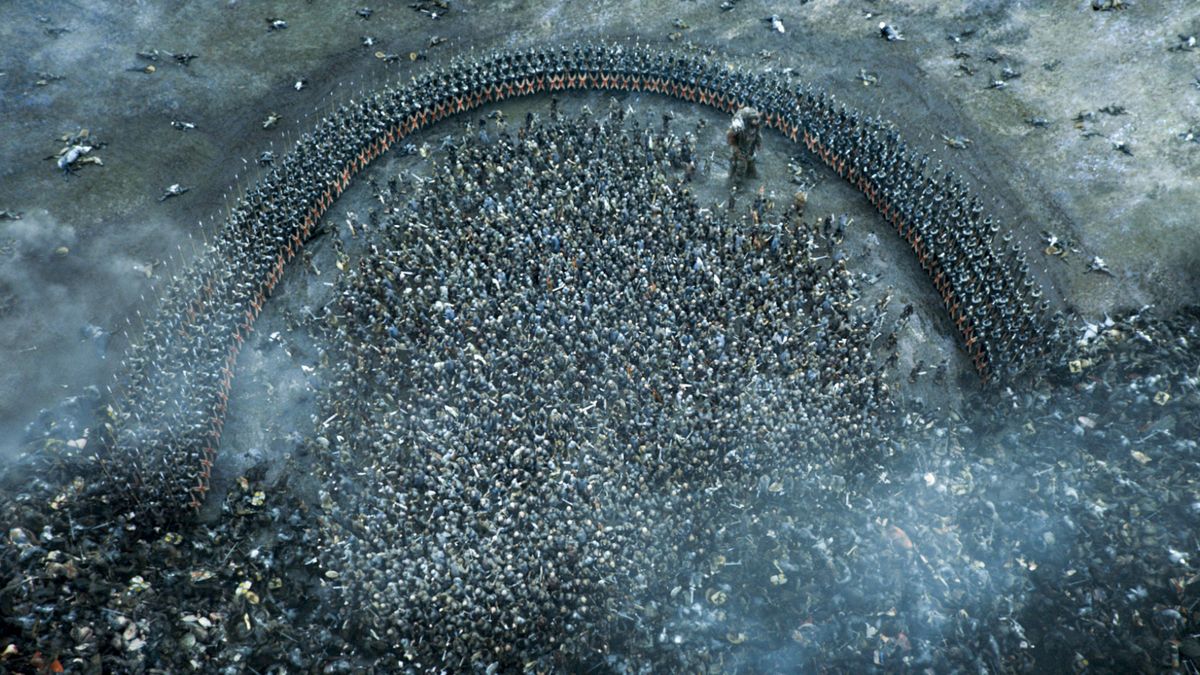
Ramsay’s forces surround Jon’s
After Littlefinger shows up with the Knights of the Vale and Ramsay retreats to the castle, the cornered Ramsay still attacks with bow and arrow — distance weapons — too absent of spirit to engage in hand-to-hand combat. Jon marches forward to pummel Ramsay with his bare hands in a close, heart-driven need for retaliation for the pain Ramsay inflicted on the Starks. While Jon’s chance to punch Ramsay in the face is satisfying for all, we can’t forget that this impulse is not what wins the fight — Jon just gets lucky. If the Battle of the Bastards teaches us anything, it’s that detachment leads to victory more often than being physically on the front lines.
Ramsay is finished off by the one person who is both a Stark and a Bolton, and who has enough plotting, vengeful moxie to restore her family: Sansa. While we have seemingly been watching the army of a hot-blooded soldier lose to the superior army of a reptilian general, the Starks’ real general was waiting even further back and plotting even more steps ahead. Sansa finally beats Ramsay at his own game, hiding her dominance as a tacticion while secretly recruiting the Knights of the Vale through Littlefinger and keeping Jon in the dark, knowing he cannot be trusted to hold to careful strategy.
But Sansa wins by using Ramsay’s own tactics of cold, calculated ferocity. In his final moments, Ramsay taunts her, saying he can’t die because “I’m part of you now.” Fans may find it hard to resist interpreting these words as a subtle hint that Sansa is pregnant (which is a possibility), but Ramsay’s words reflect a greater truth. As Sansa arranges for Ramsay’s previously “loyal” attack dogs, whom he has starved for seven days, to devour him, the poetically grotesque nature of Ramsay’s execution proves his words right. Sansa had to become Ramsay in order to defeat him. Now he is, indeed, part of her.
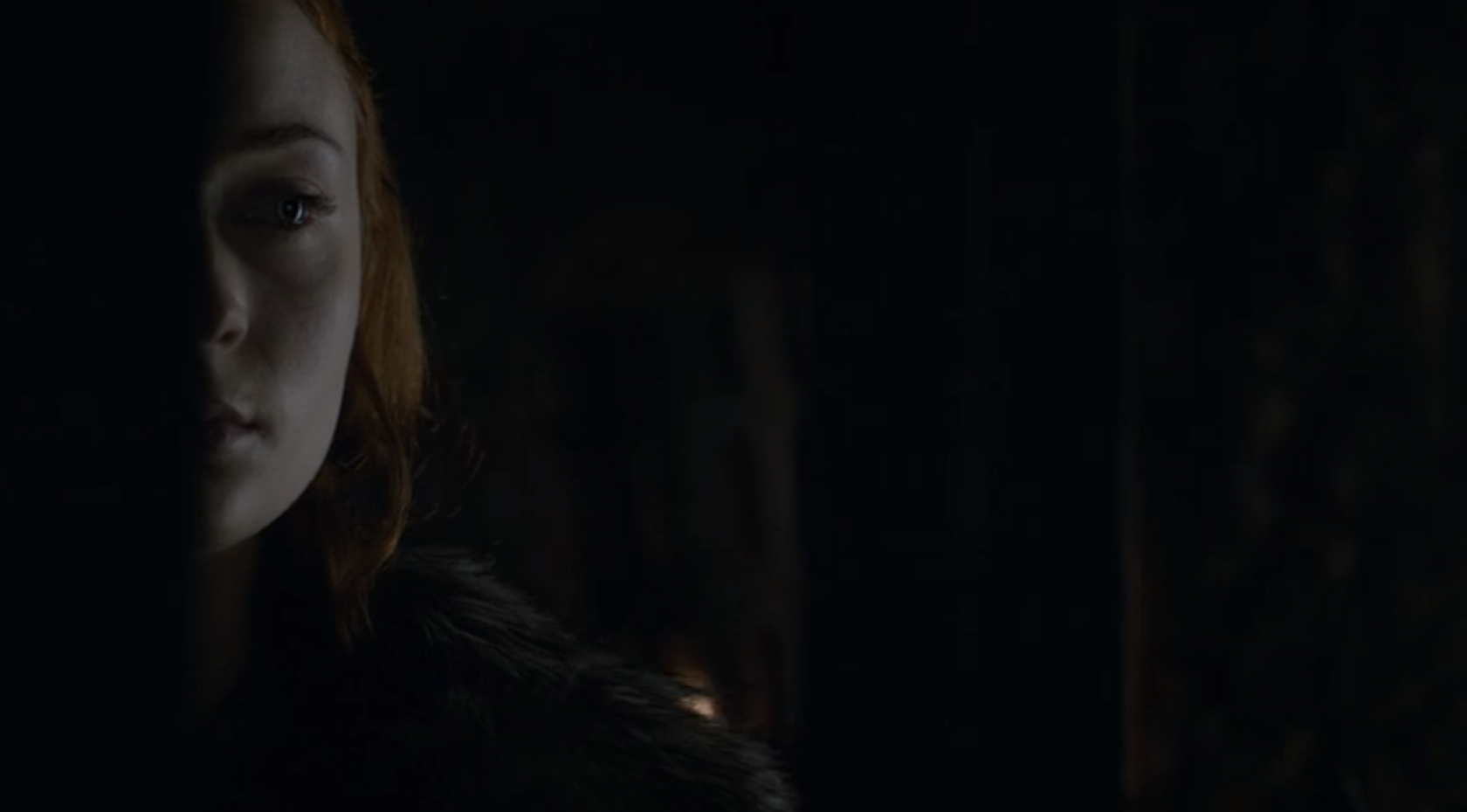
Sansa watches Ramsay, moments before his death
With the unprecedented scale and length of the Battle of the Bastards, it’s easy to forget it is actually the second battle of the episode. The first comes from Meereen, where Daenerys (Emilia Clarke) is once again tasked with toasting slavemasters while sitting atop her vehement dragons. In her battle, the cinematography uses even more distant aerial shots, giving her almost a God’s eye view of an entire city in combat, with Daenerys riding high as she rains fire on the tiny little people below. This view makes it easy to understand how the Targaryen family controlled Westeros for so many years (how can you fight something you can’t get close to without dying?), but it also reveals the danger that Daenerys may lose sight of those “little people” on the ground.
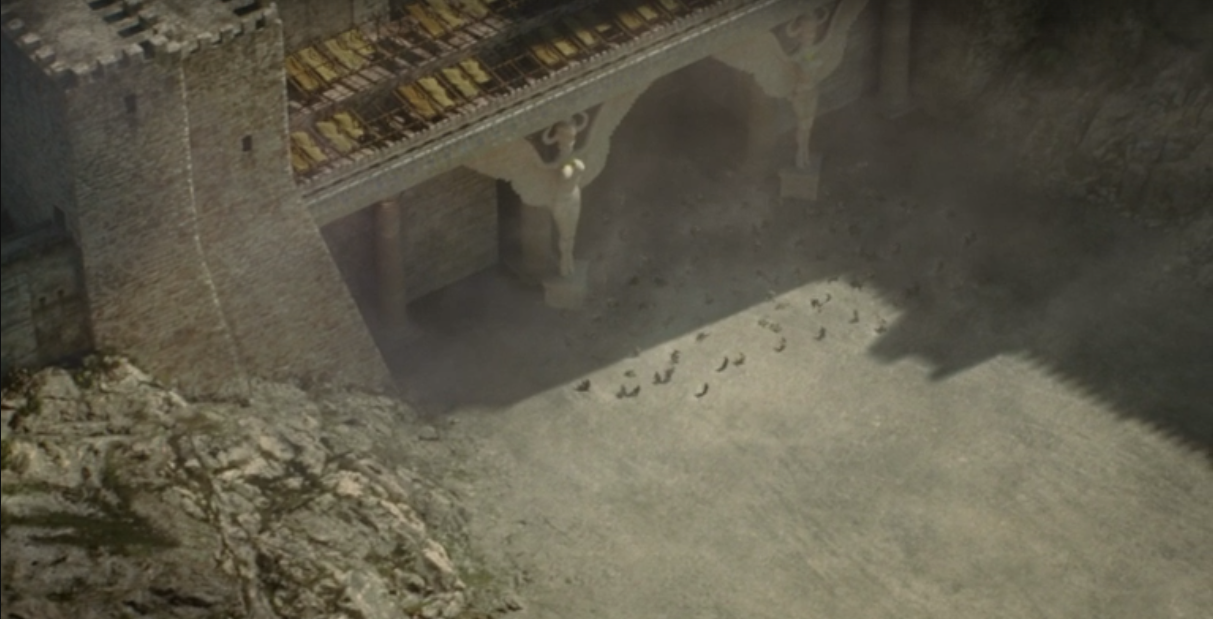
The view from one of Daenerys’ dragons
Her all-or-nothing philosophy of moral righteousness has so far focused on justice for the common people, but this ultra-wide view makes it impossible to distinguish the deserving from the underserving recipients of her righteous wrath. The cinematography style stands in striking contrast to Jon’s close-up battle experience in the following scene. While the opening battle seems another episode altogether, it’s no coincidence that the showrunners put the battles together. The two battles of the episode use these visual contrasts to compare the natures of four key characters: Jon, Ramsay, Daenerys and Sansa.
Still, the battle of Meereen undoubtedly pales in comparison to the Battle of the Bastards, whose scale is nearly unprecedented on TV. It is the grossest, deadliest, most innovative scene of combat yet on the series.
More importantly, it is a fitting reflection of two characters who have been dominating the screen, for better or for worse, for four seasons.
For more on the filming of the fight scene, see this “Anatomy of a Scene” video by HBO:
(Want to get more Game of Thrones insights by email? Here’s the sign-up.)
Read more on Game of Thrones: What real-life wars inspired the battle techniques in “The Battle of the Bastards”?

